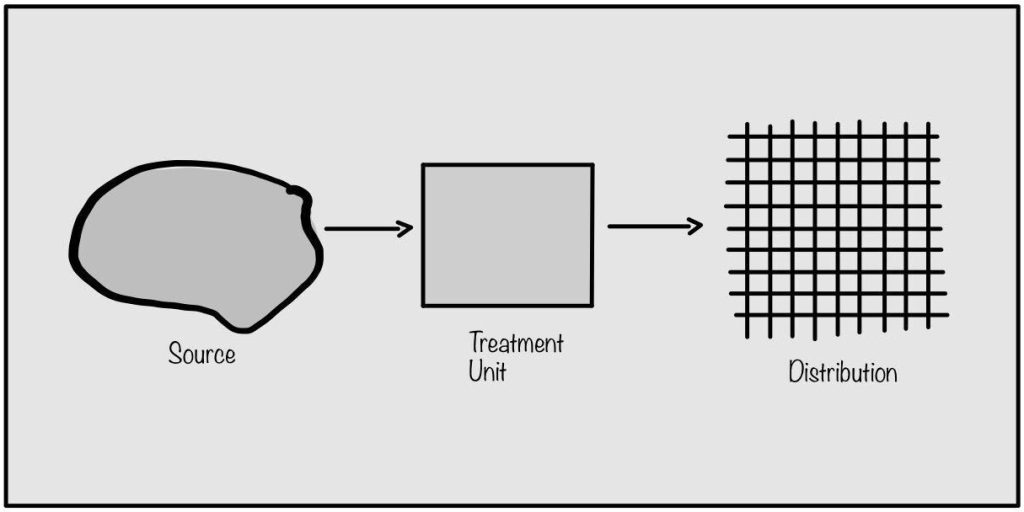It is the branch of Engineering that deals with the development of source, treatment of water, and distribution system of water. But why is it necessary? Since the very beginning of human civilization, man doesn’t need to treat water before its use. And usually, they lived near the bank of a river to easily access the water.
However, with the scientific and industrial revolutions in the recent past, the water gets polluted. Pollute water creates problems for humans, and society so before using it treatment is necessary.

Sources of water
Water is flooded with water covering $71%$ of its surface. But we can not access all the water because approx $97%$ of water is salty water present in seawater. Again approx $2$% water is stocked in the glacier. and the rest water is available for use. Water is a natural resource because we get water through the water cycle. The water cycle involves the process of evaporation, condensation, and precipitation. After precipitation, some water gets infiltrated into the ground. and the rest water flows as surface runoff. So basically we have two sources of water
- Surface source: Any water bodies above the ground including streams, rivers, lakes, reservoirs, etc.
- Sub-surface source/Groundwater: Water that is present below the surface of the earth.
Treatment of water
Water treatment helps in the removal of containment, improving the taste, smell, and visual appearance of drinking water. It also reduces the amount of chlorine, soil residue, and organic and inorganic substances.
Treatment is a method of removing the substances present in water in excess concentration. The treatment process include
- Aeration: Used for removal of odor
- Solid separation: To separate suspended
- Settling operation: Removal of suspended and colloidal impurities
- Coagulation: Removal of colloidal impurities
- Softening: Ions of Ca and Mg removal
- Filtration: Removal of dissolved impurities
- Disinfection: Removal of harmful pathogen
Distribution System
Water should reach every consumer with the same degree of purity as it is achieved at the treatment plant. to perform. There are 4 different types of distribution system
- Dead-end system: Most suitable for an unsymmetrical area like old towns and cities.
- Radial system: Supplies high discharge with minimum head loss.
- Grid iron system: Best suited for modern well-planned cities.
- Ring system: Discharge rate is high as compared to other systems
Conclusions
Water Supply Engineering is a sub-field of environmental engineering that deals with providing safe and sustainable water supply to communities. It includes finding source, checking its quality, design of treatment unit and distribution system. Basically an environmental engineer ensure that people have access to clean, potable water. It also looks after the efficient utilization of water and its conservation, this field is becoming more important in the face of increasing water scarcity and population growth.
- Design of treatment unit: It involves the design of different treatment units such as Screen, Grit chamber, settling tank, filtration unit, Distribution tank, Distribution network, etc.
- Design of water distribution system: It include the the design of supply network with components that carry potable water from storage tank to consumers.
- Potable water: Water free from all contaminants and harmful bacteria.
This article was crafted by a group of experts at eigenplus to ensure it adheres to our strict quality standards. The individuals who contributed to this article are:
Author

Suprabha Panda
M.Tech
She is an assistant professor with masters in Environmental Engineering.

